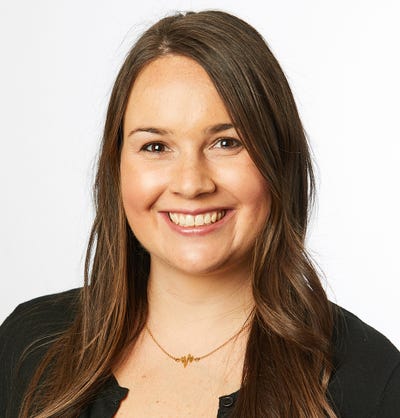On HCAHPS, for Michael AtanasioOn HCAHPS, for Michael Atanasio
Michael Atanasio, from Overlook Hospital, speaks about satisfaction surveys. FSD talked with Michael Atanasio, manager of food and nutrition services at Overlook Hospital in Summit, N.J., about the patient satisfaction survey HCAHPS and how he’s increasing his scores.
FSD talked with Michael Atanasio, manager of food and nutrition services at Overlook Hospital in Summit, N.J., about the patient satisfaction survey HCAHPS and how he’s increasing his scores.
What are HCAHPS?
It stands for Hospital Consumer Assessment of Healthcare Providers and Systems. HCAHPS is a survey of the patients to determine what the quality of care is.
The categories include communication with nurses, communication with doctors, response to hospital staff and overall rating of the hospital and willingness to recommend the hospital. This is for any hospital that gets reimbursement from Medicare or Medicaid.
It’s countrywide. It’s the government’s efforts, and it’s been adopted by the CMS (Centers for Medicare & Medicaid Services), to improve the quality of healthcare. What’s going to happen is that when the hospitals get reimbursed for Medicare and Medicaid, those reimbursements, or at least a portion of it, is going to be contingent on the level of quality care you provide. What they are basically saying is if you want to provide inferior service, God bless but you’re not going to get paid now. They are trying to work through finances and pockets to try to get people to improve.
How it is different than Press Ganey?
It’s basically like a Press Ganey survey. Most people who currently use Press Ganey use it to administer the HCAHPS questions. The difference is there isn’t a foodservice-specific question.
So how does this affect foodservice operations?
A lot of foodservice directors aren’t all that familiar with it, which kind of surprises me. There was a dry run in 2006. There are certain modalities and numbers that hospitals had the option of publicly reporting in 2006. Now with the advent of HCAHPS they have to report it. In 2009, in order to get 2% of Medicare and Medicaid reimbursement, you had to report this information from the survey publicly.
There is not a specific question as to how was your food. However, we greatly influence the response of hospital staff question and overall experience. I do know from my facility there is a tremendous amount of focus, especially now, because the patient satisfaction now is the start of what we will be getting our reimbursement from. In 2009, 2% of our Medicare and Medicaid was up for grabs and you got the whole 2% just by reporting. In 2012, of that 2% you’ll get 1% for reporting and 1% for your performance outcomes, which is based off a national norm. The national norm is based off information collected between Jan. 1, 2011 and March 21, 2012. In subsequent years it starts shifting to performance. By 2014, 1.25% will be performance. Eventually all of it will be based on performance. So you’re at risk of losing 2% of millions, which is quite a bit of money, with HCAHPS.
As a foodservice director, as part of the overall perception of hospital, we are asked to put certain measures in place to achieve a greater patient satisfaction outcome. However, particularly here in New Jersey, hospitals are still in tight constraints in terms of additional resources. I can’t go and say, ‘I’ll get you the scores, but I need 10 more people.’ We’re being extraordinarily creative to find ways to bolster our scores but stay within budget.
What are you doing to increase your patient satisfaction?
A lot of it is just fundamentals and it’s not a great revelation. We try to tweak out our menu and we put a new menu in place at the beginning of the year. Every couple of months we evaluate it and put in changes. We got back to more and more scratch cooking.
The biggest impact is really just getting in front of the patients. We’ve reimplemented our adopt a floor program. We’re up on the floors. We’re auditing ourselves to make sure we’re doing what we’re supposed to be doing. A component of that is relationship building with nurses. Nursing plays a big part in our scores, not only because they process the initial part of the menu information but also because they are in front of the patients. A lot of it is seeing nursing as a customer and seeing what we can do for them.
We’ve been piloting a bedside menu entering process using a tablet. My goal is to eventually use an iPad to get the patient menu selection. That’s been a great help. We do a dinner for two program for new mothers. We do an afternoon snack. We do additional services that are unit specific. In pediatrics we serve their meals in lunch boxes. Our scores have gone up.
We’re also working on an electronic ordering system for the cafeteria, so that visitors and family can order their meals online without leaving the bedside of their patient.
You said hospitals stand to lose millions of dollars but a lot of other foodservice directors aren’t talking about this. Why is that?
I don’t have a good answer. If I were to hazard a guess, people are so accustomed to Press Ganey and there are several questions for every department. I think people are really conditioned to that and HCAHPS is different because there isn’t a question specific for foodservice.
The data that we are collecting right now is what our reimbursement in the following years is going to be predicated on. This is building a baseline. To get that 2% your scores must meet the national norm. If you don’t meet that national norm there is another way you can get that reimbursement and that’s to beat your baseline. If you don’t do that then you have to outperform the other hospitals in your state.
About the Author
You May Also Like






